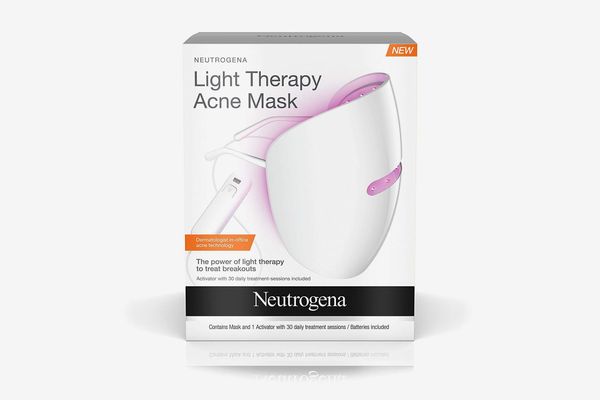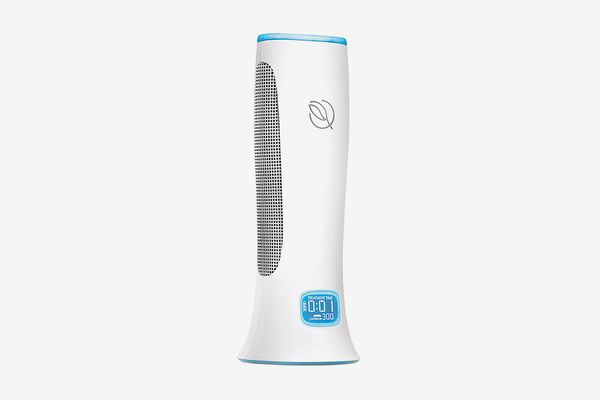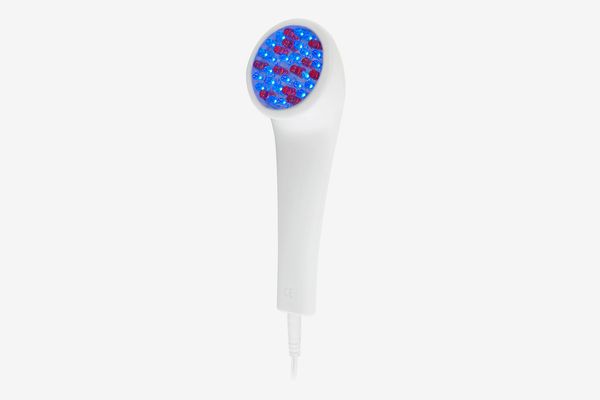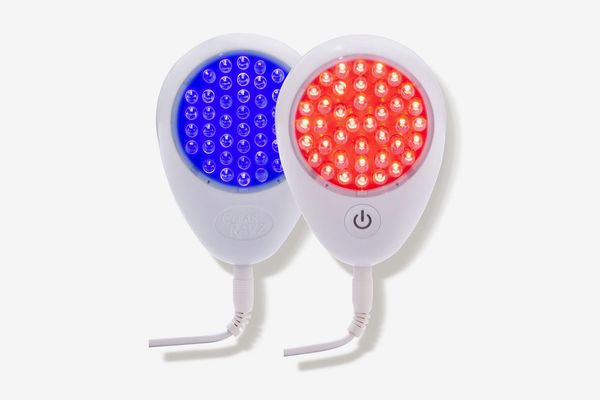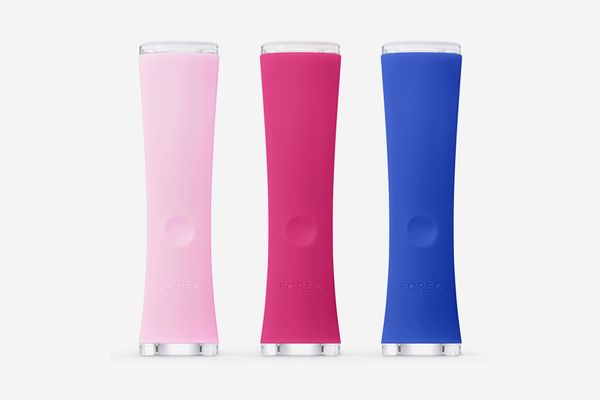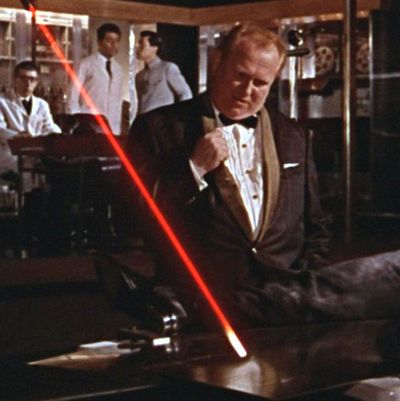
Light-emitting-diode (more commonly known as LED) light-therapy devices have been all the rage in skin care recently. Our intrepid beauty writer Rio Viera-Newton has covered some of them here, from Neutrogena’s highly Instagrammable light-therapy mask (which uses both red and blue light) to the handheld Foreo blue-light device for acne, but chances are you’ve seen them pop up on Instagram or on YouTube, too. They’re billed as skin-enhancing devices with the potential to improve acne, decrease oil production, and even soothe inflammation, but how effective are they actually?
“There is science to support it, so it’s not voodoo,” says Angela Lamb, director of the Westside Mount Sinai Dermatology Practice, “but it’s important to know its limitations.” Exposing your skin to different forms of low-level LED light does have anti-bacterial and anti-inflammatory benefits, which is why they’re commonly used for treating redness or acne. These at-home devices are essentially a cheaper, more convenient (less powerful) version of the LED light treatments commonly available in a dermatologist’s office.
There are a variety of at-home light treatments out there — Skin, Inc.’s buzzy LED device called the Tri-Light uses red, blue, and yellow light — but typically what you’ll see on shelves are ones harnessing blue or red light (or a combination). Blue light is a shorter wavelength that destroys acne-causing bacteria on the skin’s surface, while red light penetrates deeper to help with inflammation, but Hooman Khorasani, the chief of the division of Dermatologic and Cosmetic Surgery at the Icahn School of Medicine at Mount Sinai, says that both blue- and red-light therapy “may reduce the size of the sebaceous glands, so you don’t produce as much oil.”
Khorasani says that overall there is some evidence for its effectiveness in improving redness and acne, but would be hesitant to ever recommend at-home light therapy for “anti-aging” purposes, as it’s sometimes advertised. “There are a number of small trials that have shown modest efficacy for these at-home devices [at improving acne], mostly ranging from 30 to 50 percent improvement,” he says. “Benefits can usually be seen as early as a few weeks, and they continue to build over the first two to three months after the treatments. But there are no robust clinical trials comparing these devices head-to-head or to other acne treatments.”
And while light therapy may not work for wrinkles and may not be a miracle cure for acne, both experts say that there aren’t really downsides if you’re willing to give it a shot. Both light treatments have been shown to be relatively safe, with minimal side effects. For acne, Khorasani notes that LED devices won’t take the place of acne fighters like retinoids; instead, they should be used in concert with a multipronged treatment plan — and never for severe acne. If you are combining them with retinoids, Lamb also suggests alternating the days you use either of them, to avoid photosensitivity. Below, their suggestions for the FDA-approved devices that may help with your zits.
The best entry-level device out there if you aren’t looking to spend a ton on light therapy (one that’s also very popular among acne-sufferers) is the Neutrogena Light Therapy Mask — recommended by both experts. It covers the entire face, and you are supposed to use it for ten minutes at a time. Rio tried it firsthand and says she was “pleasantly surprised by how well it worked on getting rid of active blemishes.”
Another one recommended by both Khorasani and Lamb is this popular Tria blue-light device for acne, which comes with a targeted tip to focus blue light only on specified areas of the face (e.g, your pimple).
Both experts suggested the Light Stim pen, too, which combines blue- and red-light technology in a handheld device that you can place directly on the skin’s surface.
Lamb also recommends this handheld device from Baby Quasar, which is double-sided, so you can use it for both blue- and red-light therapy. Khorasani says that it’s always important to read the directions for these devices, too, which could be important with this one (since it advises that you test spot a patch of skin for redness and pain before continuing to use it).
And here’s another FDA-approved blue-light pen that Rio recently recommended as a device that helped her get rid of a “giant, horrible cystic blemish.”
The Strategist is designed to surface the most useful, expert recommendations for things to buy across the vast e-commerce landscape. Some of our latest conquests include the best women’s jeans, rolling luggage, pillows for side sleepers, ultra-flattering pants, and bath towels. We update links when possible, but note that deals can expire and all prices are subject to change.
Every editorial product is independently selected. If you buy something through our links, New York may earn an affiliate commission.
